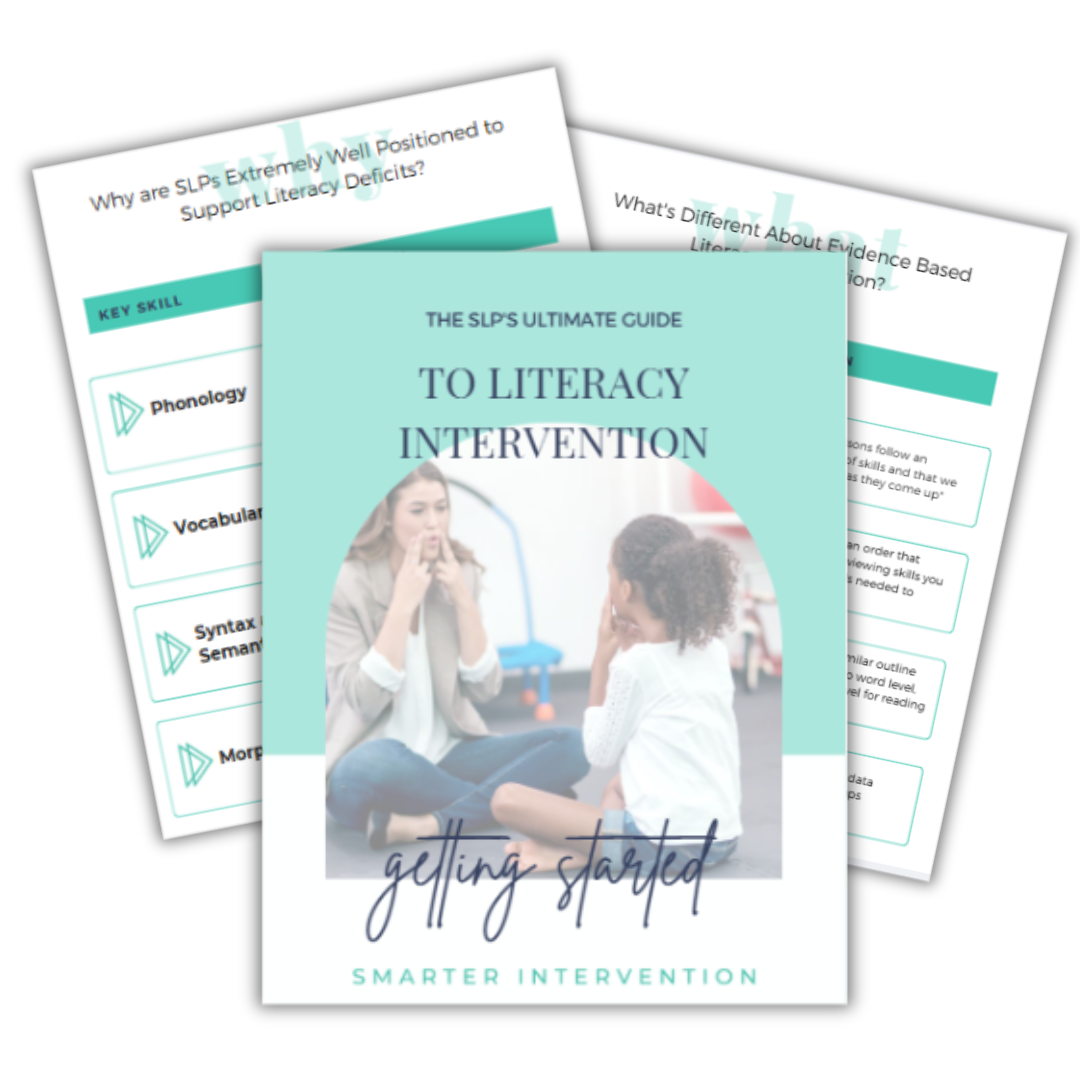An SLP’s Ultimate Guide to Literacy Intervention
Did you know that SLPs are uniquely qualified to support students’ literacy development?
It’s true! Speech Language Pathologists (SLPs) have an incredible base of knowledge and background which are incredibly helpful in supporting struggling readers.
Let's break it down -
To read and write, three neurological processors need to work together.
The orthographic processor is responsible for recognizing and interpreting the visual component of our language.
This part of our brain recognizes the curves and lines in "bat" as the letters b, a, and t.
The phonology processor is responsible for recognizing and interpreting the sound structure of our language.
This part of the brain recognizes the /b/, /a/, and /t/ sounds in the word "bat."
The semantics processor is responsible for tying meaning to our language.
This part of the brain determines if "bat" is a nocturnal flying creature, a wooden/metal club used in sports, or the action of "batting" away a fly.
SLPs are already very well trained to support the phonology and semantics processors.
Often, (and we feel like we can say this because we are literacy interventionists), SLPs are more equipped to support the language development component of reading and writing.
So, when you think about how reading develops in the brain, an SLP is already supporting two of the three cognitive processes. If you can tie the visual component into what you are already doing, you're able to target literacy in addition to language.
And if that wasn't enough to convince you - think about this statistic.
According to Catts, et. al, 40-70% of students who are diagnosed with a specific language impairment also struggle with literacy.
This means that the students you are already working with are likely going to need literacy intervention in addition to language support.
So, how does an SLP get started with literacy?
First - Identify literacy needs: Screen or assess whether your students also struggle with reading and writing.
Second - Prioritize focus: Decide whether literacy or language is the primary need so your time targets what matters most.
Third - Connect the triangle: Pair sounds or words you’re targeting in speech/language with their written forms to link oral and written language.
That’s it!
To help you get started, we put together the SLP's Ultimate Guide to Literacy Intervention. This Guide will walk you through your first steps to implementing literacy intervention support.
Catts, Hugh & Fey, Marc & Zhang, Xuyang & Tomblin, J.. (1999). Language Basis of Reading and Reading Disabilities: Evidence From a Longitudinal Investigation. Scientific Studies of Reading - SCI STUD READ. 3. 331-361. 10.1207/s1532799xssr0304_2.


